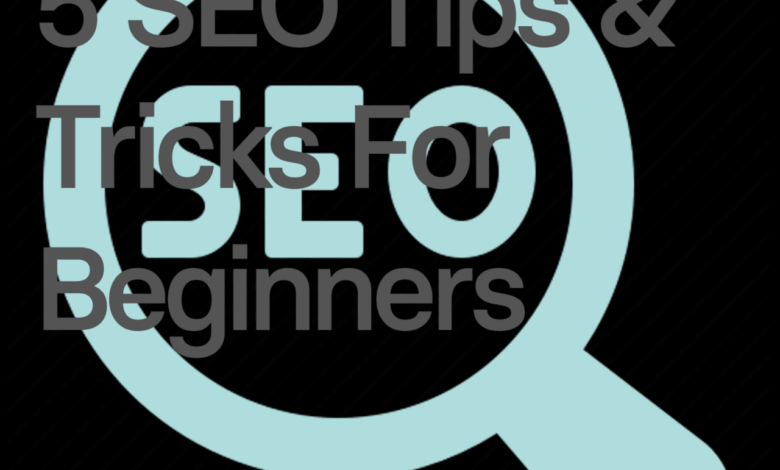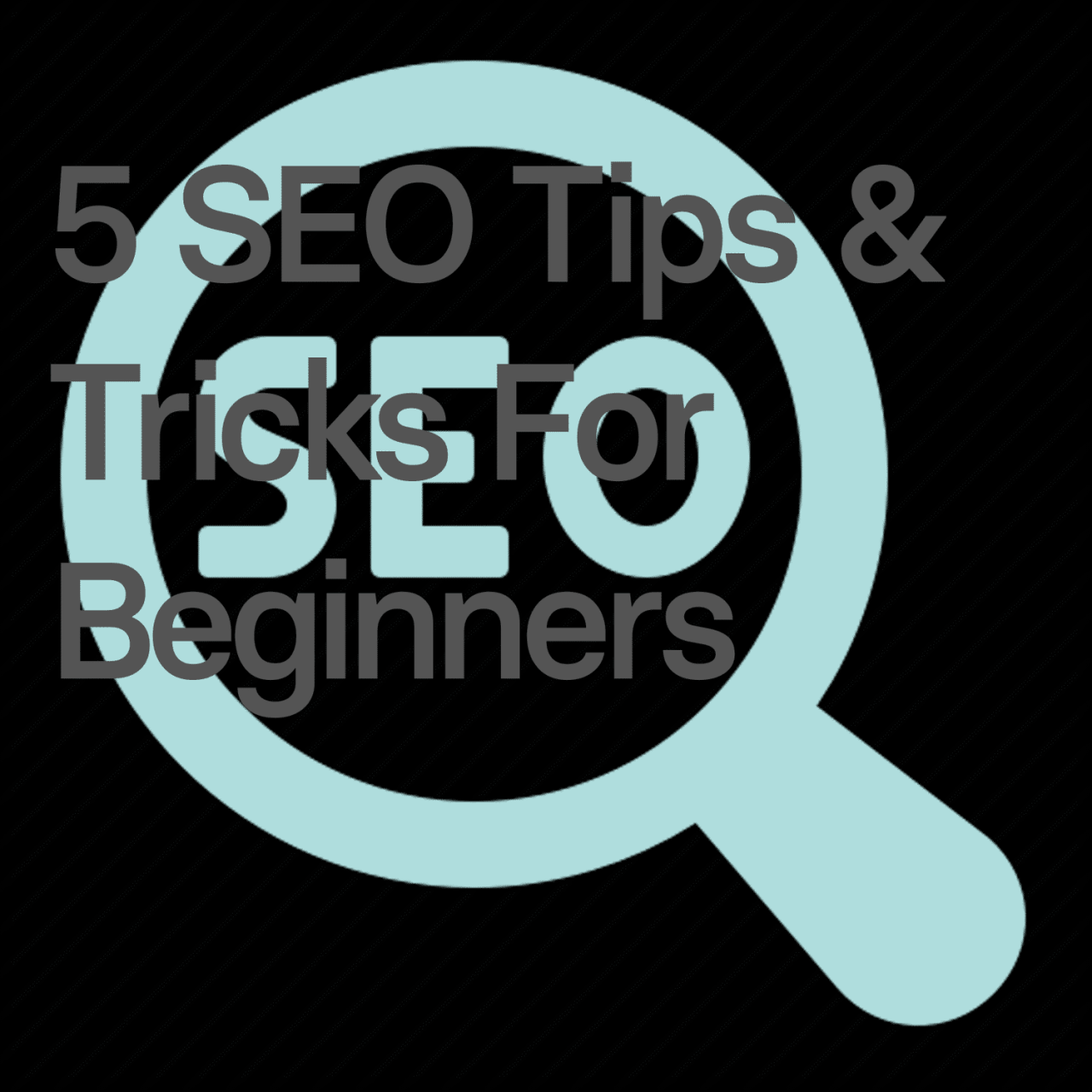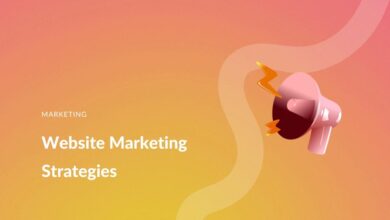
30 SEO Tips for Small Businesses
30 seo tips for small businesses – 30 tips for small businesses – that’s a lot, right? But don’t worry, I’m breaking down the essential strategies to boost your online visibility and attract more customers. From mastering on-page optimization and crafting killer content to conquering off-page tactics and mastering technical , we’ll cover it all. This isn’t just a list; it’s your roadmap to success for your small business.
We’ll explore how to optimize your website for search engines, create engaging content that resonates with your target audience, and build a strong online presence. Think of this as your ultimate guide to getting found online, increasing your brand awareness, and ultimately driving more sales. Get ready to level up your small business’s game!
Content Marketing Strategies
Content marketing is the cornerstone of any successful small business’s online presence. By creating and sharing valuable, relevant, and consistent content, you attract and retain a clearly defined audience — and, ultimately, cultivate profitable customer relationships. High-quality content establishes your business as a thought leader in your industry, boosting brand credibility and driving organic traffic to your website.High-quality, engaging content offers numerous benefits for small businesses.
It fosters trust and loyalty with potential customers by showcasing expertise and providing valuable information. This leads to increased brand awareness, improved search engine rankings (), and ultimately, higher conversion rates. Engaging content also encourages social sharing, expanding your reach organically. The key is to tailor content to resonate with your specific target audience, understanding their needs, pain points, and preferences.
Content Formats for Different Target Audiences
Different content formats appeal to different audiences. For example, visually-oriented audiences might respond well to infographics or short, engaging videos. Those who prefer in-depth information might prefer blog posts or ebooks. Consider your target audience’s preferred methods of consuming information when choosing your content format. A younger demographic might prefer short, snappy videos on TikTok or Instagram Reels, while an older demographic might prefer longer-form blog posts or email newsletters.
Content Calendar Template for Small Businesses
A well-structured content calendar is crucial for maintaining consistency. Here’s a simple template:
| Date | Platform | Content Type | Topic | Goal |
|---|---|---|---|---|
| October 26, 2023 | Image Post | New Fall Menu Item | Drive Sales | |
| October 27, 2023 | Blog | Blog Post | Tips for Baking the Perfect Pie | Establish Expertise |
| October 28, 2023 | Video | Behind-the-Scenes Bakery Tour | Increase Brand Awareness |
This template allows for scheduling content across various platforms, ensuring a consistent online presence and maximizing reach. Remember to tailor the content to each platform’s specific audience and format guidelines.
Content Promotion Strategies: Social Media, Email Marketing, and Guest Blogging
Each promotion strategy has its strengths and weaknesses. Social media offers broad reach but can be noisy; email marketing allows for targeted communication but requires a built email list; guest blogging establishes authority but takes more time and effort.For a hypothetical bakery, a multi-pronged approach is best. Instagram and Facebook are ideal for showcasing visually appealing baked goods and engaging with customers directly.
Email marketing can be used to announce special offers, new menu items, and upcoming events to loyal customers. Guest blogging on food blogs or local community websites can expand reach to a wider audience.
Repurposing Existing Content
Repurposing extends the lifespan and impact of your content. A blog post about pie-baking techniques could be transformed into an infographic summarizing key steps, or a short video demonstrating the process. A video showcasing the bakery could be transcribed into a blog post or podcast episode. This maximizes your content’s value and minimizes the time spent creating entirely new content.
Five Unique Content Ideas for a Plumbing Business
1. “5 Common Plumbing Mistakes Homeowners Make (and How to Avoid Them)”
This provides valuable information and positions the business as a helpful resource.
2. Video tutorial
“How to Unclog a Drain Without Calling a Plumber (Most of the Time)” : This demonstrates expertise and builds trust.
3. Infographic
“Seasonal Plumbing Maintenance Checklist” : This is visually appealing and promotes preventative maintenance services.
4. Blog post
“Understanding Your Water Bill: Tips for Saving Money” : This establishes the business as a knowledgeable and customer-focused entity.
5. Case study
“How We Solved a Complex Plumbing Problem for a Local Business” : This showcases successful projects and builds credibility.
Off-Page Optimization

Source: broadly.com
Off-page optimization is crucial for small businesses aiming to boost their online visibility and attract more customers. It encompasses all the activities you undertake outside your website to improve your search engine rankings and brand reputation. While on-page focuses on optimizing elements within your website, off-page concentrates on building your website’s authority and trustworthiness in the eyes of search engines.
This ultimately leads to higher rankings and increased organic traffic.
Local for Small Businesses
Local is paramount for small businesses with a physical location or serving a specific geographic area. It ensures your business shows up in local search results when potential customers search for products or services near them. Optimizing your Google My Business (GMB) profile is a cornerstone of effective local .
So, you’re diving into my 30 SEO tips for small businesses? Awesome! One crucial aspect often overlooked is video marketing, and that’s where mastering YouTube comes in. Check out this fantastic guide on getting it on with youtube to boost your visibility. Back to those SEO tips – remember, consistent, high-quality content is key, and video is a powerful way to achieve that!
Optimizing a Google My Business Profile: A Step-by-Step Guide
- Claim and Verify Your Business: Begin by claiming your Google My Business profile. Google will guide you through the verification process, often requiring a postcard with a verification code mailed to your business address.
- Complete Your Business Information: Fill out every section of your profile completely and accurately. Include your business name, address, phone number (NAP), website, business hours, categories, attributes (e.g., wheelchair accessible), and a detailed description highlighting your unique selling proposition.
- Add High-Quality Photos: Upload professional, high-resolution photos of your business, products, services, and team. Visuals are critical for attracting customers.
- Respond to Reviews: Actively monitor and respond to both positive and negative reviews. Responding shows you care about customer feedback and helps build trust.
- Post Regularly: Use the GMB posts feature to share updates, promotions, and special offers. This keeps your profile fresh and engaging.
- Encourage Reviews: Ask satisfied customers to leave reviews on your GMB profile. This boosts your local ranking and social proof.
Strategies for Building High-Quality Backlinks
Building high-quality backlinks is essential for improving your website’s domain authority and search engine rankings. These backlinks act as votes of confidence from other websites, signaling to search engines that your content is valuable and trustworthy.
Guest Blogging
Guest blogging involves writing high-quality content for other relevant websites in your industry. This provides a valuable backlink to your website while simultaneously exposing your brand to a new audience. The challenge lies in finding reputable websites that accept guest posts and ensuring your content aligns with their editorial guidelines. Success depends on identifying relevant blogs with high domain authority and pitching compelling, well-written articles.
Broken Link Building
Broken link building involves identifying broken links on other websites and suggesting your relevant content as a replacement. This strategy requires researching websites in your niche, finding broken links using tools like Ahrefs or SEMrush, and then contacting the website owners to propose your content as a suitable alternative. The challenge is identifying websites with authority and convincing them to replace their broken links with yours.
Persistence and a well-crafted pitch are crucial for success.
Directory Submissions, 30 seo tips for small businesses
Submitting your business to relevant online directories can generate high-quality backlinks and improve your local . This involves carefully selecting directories with high domain authority and ensuring your business information is accurate and consistent across all listings. The challenge lies in avoiding low-quality directories that could harm your . Focus on reputable directories with a strong track record and relevance to your industry.
Benefits of Social Media Marketing for Small Businesses
Social media marketing offers small businesses a cost-effective way to connect with their target audience, build brand awareness, and drive traffic to their website. Different platforms cater to different audiences and marketing strategies.
Effective Social Media Strategies
- Facebook: Use Facebook for building a community, running targeted ads, and sharing engaging content. Consider using Facebook groups to connect with potential customers.
- Instagram: Instagram is ideal for visually-driven businesses. Focus on high-quality images and videos, and use relevant hashtags to increase visibility.
- Twitter: Twitter is excellent for real-time engagement and sharing news and updates. Use Twitter to participate in relevant conversations and build relationships with influencers.
- LinkedIn: LinkedIn is the go-to platform for professional networking. Share industry insights, participate in discussions, and connect with potential clients and partners.
Importance of Online Reviews and Reputation Management
Online reviews significantly impact a small business’s reputation and ability to attract new customers. Positive reviews build trust and credibility, while negative reviews can deter potential customers. Effective reputation management involves actively monitoring online reviews and responding appropriately.
Encouraging Positive Reviews and Handling Negative Ones
To encourage positive reviews, provide excellent customer service and ask satisfied customers to share their experiences online. When addressing negative reviews, respond promptly, professionally, and empathetically, aiming to resolve the issue and demonstrate your commitment to customer satisfaction. Publicly addressing negative feedback shows your willingness to improve and can even turn a negative experience into a positive one.
Online Directories for Small Businesses
Listing your business information on online directories enhances your online visibility and local .
Five Online Directories
- Google My Business: Essential for local .
- Yelp: A popular platform for reviews and business listings.
- Bing Places for Business: Microsoft’s equivalent to Google My Business.
- Yellow Pages: A long-standing directory with a significant online presence.
- TripAdvisor (for relevant businesses): Highly valuable for businesses in the hospitality and tourism sectors.
Technical

Source: desotocentralmarket.com
Technical is the unsung hero of your small business’s online presence. While content and off-page optimization attract visitors, technical ensures those visitors can actually find and engage with your website. It’s about making your site easily accessible and understandable to search engine crawlers, leading to better rankings and increased organic traffic. Neglecting this crucial aspect can severely limit your reach, no matter how great your content is.
Website Speed and Mobile-Friendliness
Website speed and mobile-friendliness are paramount for a positive user experience and high search engine rankings. Slow loading times lead to high bounce rates, frustrating visitors and signaling to Google that your site isn’t user-friendly. Similarly, a website that isn’t optimized for mobile devices will lose a significant portion of its potential audience in today’s mobile-first world.To improve website performance, consider these strategies: Optimize images by compressing them without sacrificing quality.
Use a Content Delivery Network (CDN) to distribute your website’s content across multiple servers, reducing loading times for users in different geographic locations. Minimize HTTP requests by reducing the number of external scripts and resources your site loads. Leverage browser caching to store frequently accessed files locally on users’ devices. Employ efficient coding practices and use a lightweight theme or template.
Regularly audit your website’s performance using tools like Google PageSpeed Insights and GTmetrix to identify areas for improvement.
Sitemap Creation and Submission
A sitemap is an XML file that lists all the important pages on your website, providing search engines with a roadmap to navigate your content. Creating and submitting a sitemap helps search engines discover and index your pages more efficiently, improving your chances of ranking higher for relevant s.To create a sitemap, you can use various online tools or plugins specific to your website platform (e.g., WordPress plugins).
Once created, submit your sitemap to Google Search Console and Bing Webmaster Tools. These tools allow you to monitor your site’s indexing status and identify any crawling issues. Regularly update your sitemap whenever you add or remove significant pages from your website.
Structured Data Markup
Structured data markup, also known as schema markup, uses a standardized format (like JSON-LD, RDFa, or Microdata) to provide search engines with more context about your website’s content. This helps search engines understand the meaning and relationships between different elements on your pages, leading to richer search results (like featured snippets, knowledge panels, or enhanced listings).For example, implementing schema markup for a recipe website would allow Google to display key information like the preparation time, ingredients, and nutritional value directly in search results.
Similarly, for a local business, schema markup can help display your address, phone number, and business hours in a prominent way. Schema markup can be implemented by adding specific code snippets to your website’s HTML. Tools like Google’s Structured Data Testing Tool can help you verify the correctness of your implementation.
Technical Best Practices Checklist
A robust technical strategy requires attention to detail. Here’s a checklist of best practices for small businesses:
- Ensure your website is mobile-friendly and loads quickly.
- Submit an XML sitemap to Google Search Console and Bing Webmaster Tools.
- Implement structured data markup to enhance search results.
- Use a secure HTTPS connection (SSL certificate).
- Optimize your website’s robots.txt file to control which pages search engines can crawl.
- Create a clear and concise website architecture.
- Use descriptive and relevant URLs.
- Fix broken links and redirect them appropriately.
- Ensure your website is accessible to users with disabilities.
- Regularly monitor your website’s performance and address any issues.
Website Crawl Budget Optimization
Imagine your website’s crawl budget as a limited number of “visits” search engine crawlers can make to your pages within a given time period. A visual representation would be a pie chart: The entire pie represents the total crawl budget. Each slice represents a page or section of your website, with the size of the slice reflecting the number of crawls allocated to that page.
A poorly structured website with many low-value pages will have many small slices, spreading the budget thinly. Optimizing your crawl budget involves focusing your resources on the most important pages. This means prioritizing high-value content, ensuring proper internal linking to guide crawlers, and using robots.txt to block low-value or duplicate content. By concentrating your crawl budget on key pages, you increase the likelihood that search engines will index and rank them highly.
Regularly analyzing your Google Search Console data will help you understand how your crawl budget is being utilized and identify areas for improvement.
Analytics and Measurement

Source: co.uk
Understanding your website’s performance is crucial for successful . Without tracking and analyzing data, your efforts become a shot in the dark. Google Analytics provides the tools to monitor website traffic, user behavior, and the effectiveness of your strategies, allowing you to make data-driven decisions and optimize your approach for better results.Google Analytics provides a wealth of information about your website traffic and how users interact with it.
By setting up proper tracking, you gain valuable insights into user behavior, allowing you to identify areas for improvement and refine your strategies. This involves understanding how users find your site, what pages they visit, how long they stay, and what actions they take.
Using Google Analytics to Track Website Traffic and User Behavior
Google Analytics offers a comprehensive suite of tools for tracking website traffic and user behavior. Key metrics to monitor include: website traffic (unique visitors, page views, bounce rate), user demographics (age, location, interests), traffic sources (organic search, social media, referral websites), user engagement (time on site, pages per visit, conversion rate), and popular content (most viewed pages, most engaging content).
For example, a high bounce rate on a specific landing page might indicate a problem with the page’s content or design, prompting a redesign or content optimization. Similarly, understanding your top traffic sources can inform your content marketing strategy and future efforts.
Tracking the Effectiveness of Different Strategies
To measure the effectiveness of your strategies, you need to track specific KPIs associated with each activity. For example, if you’re focusing on ranking improvements, you’ll track your position for target s over time. If you’re focusing on link building, you’ll track the number and quality of backlinks acquired. Campaign tracking in Google Analytics is also useful for determining the success of specific initiatives, like email marketing campaigns designed to drive traffic to your website.
A sudden spike in traffic from a specific source directly correlated with a marketing campaign provides strong evidence of its effectiveness.
Interpreting Website Analytics Data to Inform Future Efforts
Interpreting website analytics data involves identifying trends and patterns to inform future strategies. For instance, if you notice a consistent decline in organic traffic from a particular , it might be time to reassess your content strategy for that or explore alternative s with less competition. Conversely, identifying high-performing content can help you create more of the same.
A deep dive into user behavior, such as time spent on a page or high exit rates, can pinpoint areas needing improvement or further content development.
Developing a Process for Regularly Reviewing and Updating Strategies
Regular review and updating of strategies based on performance data is critical for ongoing success. A monthly review of Google Analytics data, along with other relevant tools, is a good starting point. This review should analyze key metrics, identify trends, and inform adjustments to the strategy. For example, if your ranking drops, you might need to optimize the content further, build more high-quality backlinks, or explore other relevant s.
This iterative process of analyzing, adapting, and refining your strategy ensures continuous improvement and optimal performance.
Relationship Between Activities and KPIs
| Activity | KPI | Measurement Method | Example |
|---|---|---|---|
| Optimization | Ranking | Google Search Console, Rank Tracking Tools | Improved ranking for “best coffee beans” from page 5 to page 1. |
| On-Page Optimization | Bounce Rate | Google Analytics | Reduced bounce rate from 70% to 50% on product pages. |
| Off-Page Optimization (Link Building) | Referring Domains | Ahrefs, SEMrush | Increased referring domains from 10 to 25. |
| Content Marketing | Time on Page | Google Analytics | Increased average time on page from 2 minutes to 4 minutes on blog posts. |
| Technical | Website Speed | Google PageSpeed Insights | Improved page load time from 5 seconds to 2 seconds. |
Final Wrap-Up: 30 Seo Tips For Small Businesses
So there you have it – 30 tips to propel your small business to the top of search results. Remember, is an ongoing process, not a one-time fix. Consistent effort, data analysis, and a willingness to adapt are key. By implementing these strategies and regularly monitoring your progress, you’ll be well on your way to achieving significant online growth.
Now go forth and conquer the search engine rankings!
FAQ Compilation
What’s the difference between on-page and off-page ?
On-page focuses on optimizing elements
-within* your website (like content and meta descriptions), while off-page involves activities
-outside* your website (like link building and social media marketing).
How often should I update my strategy?
Regularly! At least monthly, review your analytics, track your rankings, and adapt your strategies based on what’s working and what’s not. Algorithm updates happen frequently, so staying adaptable is crucial.
Do I need to hire an expert?
Not necessarily. Many small business owners can successfully manage their themselves with diligent learning and consistent effort. However, if you lack the time or expertise, hiring an expert can be a worthwhile investment.
How long does it take to see results from ?
is a long-term game. You won’t see overnight results. It usually takes several months of consistent effort before you start seeing significant improvements in your rankings and traffic.





